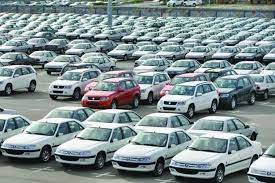The used car market in Karachi, one of Pakistan’s busiest and most vibrant cities, experiences significant shifts during the Islamic months of Ramadan and Eid. While religious and cultural in nature, these periods have practical economic effects, especially in sectors driven by consumer behavior like the automobile market.
In this blog, we break down how seasonal trends, demand surges, and financial motivations combine to influence the buying and selling of used cars during this period.
1. Surge in Listings During Ramadan
As the holy month of Ramadan begins, a noticeable increase in used car listings emerges on platforms like Famewheels, PakWheels, OLX, and local Facebook groups. Many sellers—particularly middle-income individuals—choose this time to liquidate assets. The reasons are often personal or religious, including:
- Zakat obligations, which encourage asset distribution or charitable giving
- Financial planning before Eid expenses, including family gifts, travel, or social responsibilities
- Influx of overseas remittances, allowing some families to upgrade their vehicle and sell the older one
This results in a temporary oversupply, especially in the entry-to-mid range segments (PKR 1.5–3 million), including popular models like Suzuki Mehran, Toyota Corolla, and Honda City.

2. Price Volatility
During mid-Ramadan, when listings peak, buyers often find that prices are more negotiable. However, as Eid approaches, this trend reverses. Here’s how:
- Weeks 2–3 of Ramadan: More sellers, fewer buyers due to fasting routines and limited daytime transactions. Buyers have greater bargaining power.
- Last week of Ramadan into Eid: Many buyers return to the market, looking to purchase cars for holiday travel or post-Eid use. As demand increases, prices rise—sometimes by PKR 200,000 to PKR 300,000, especially for fuel-efficient models and recent imports.
If you’re planning to buy, the best window is often early to mid-Ramadan. For sellers, post-Eid can be more profitable, assuming inventory is still unsold and market demand remains high.
3. Eid as a Motivation to Upgrade
In Karachi, owning a car is not just a utility—it’s a status symbol, and Eid provides the social setting to showcase that. Many families prefer to:
- Purchase a car before Eid to use during family gatherings and outings
- Gift a car to children, newlyweds, or parents
- Replace an older model with a newer one to match financial gains from bonuses or seasonal business profits
This mindset leads to an increased number of first-time buyers or second-car buyers during this time, further pushing demand.
4. Import and Inventory Timing Issues
Dealers in Karachi also face logistical pressures during this season. The import and clearing of Japanese used cars (a large part of Karachi’s used car inventory) can slow down due to:
- Port congestion before Eid holidays
- Delayed customs clearance due to shorter government working hours
- Increased freight and duty costs
This tightens supply for newer models and may cause spikes in dealer prices. Consumers then shift to locally used vehicles, increasing demand and raising prices even in the domestic segment.

5. Tips for Buyers and Sellers During Ramadan & Eid
For Buyers:
- Begin your car search early in Ramadan when supply is high.
- Don’t wait until Chaand Raat—prices and urgency increase dramatically.
- Verify vehicle documents early to avoid post-holiday office closures.
For Sellers:
- List vehicles during early Ramadan for exposure, but aim to close the deal close to Eid.
- Clean, photograph, and post your listing with full details—buyers are more cautious during religious seasons.
- Be transparent in negotiations to build trust during a spiritual month.
Conclusion
Ramadan and Eid are not just spiritually significant—they’re also key economic periods in Karachi’s used car market. Whether you’re a buyer or a seller, understanding how prices and behaviors shift during this season can give you an edge in making the right decisions.
The used car market in Karachi will continue to evolve, but the trends during Ramadan and Eid are deeply rooted in culture, economics, and timing. With the right planning, both buyers and sellers can benefit from this seasonal opportunity.









